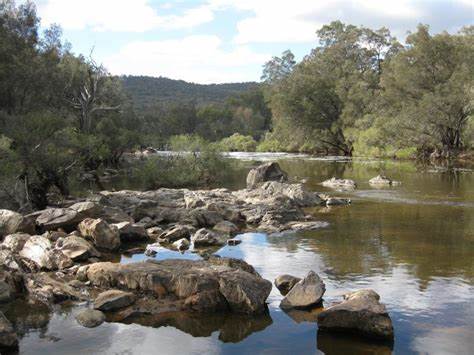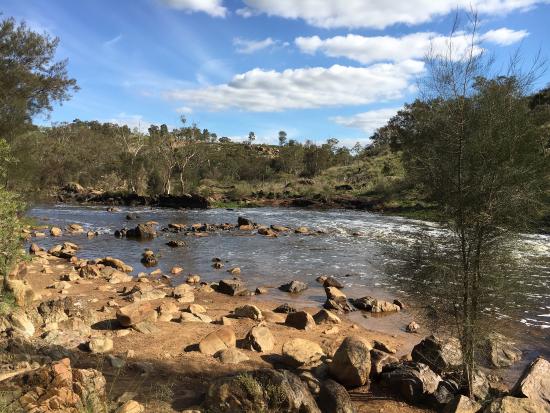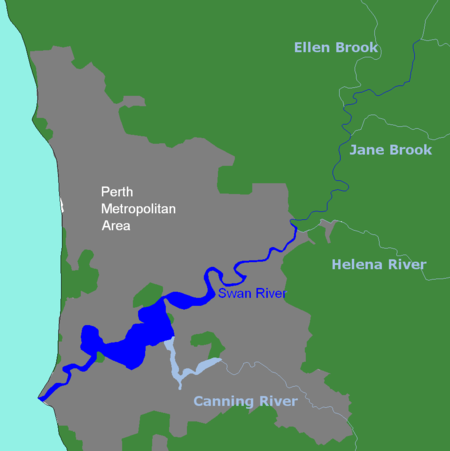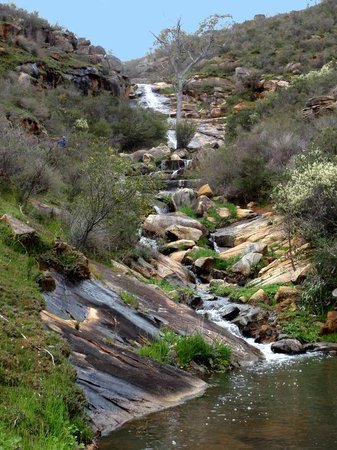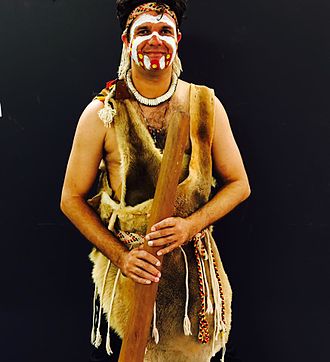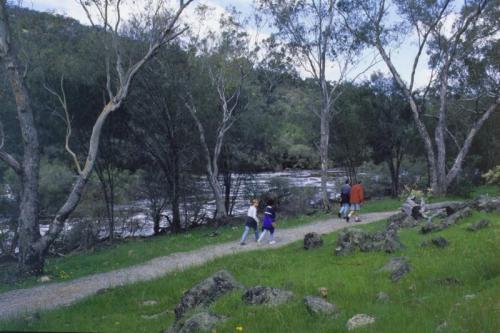
AsianOverland.net
Tour Guide - Itinerary
Asian Overland Sydney to London
Started 22/06/2022 Finished 21/06/2023365 Days ITINERARY
Day 17 date 08/07/2022PERTH to UPPER SWAN RIVER, NOONGAR
ASIANOVERLAND.NET SYDNEY TO LONDON DAY 17: PERTH TO UPPER SWAN RIVER, NOONGAR
The indigenous heritage of the Swan River region is over 40,000 years old. The Noongar Aboriginal people of the Wadjuk tribe, who are the traditional landowners of the Swan Valley, lived here for 40,000 years before colonial settlement began. As per the beliefs of the Indigenous people, the Swan Valley was created by a serpent named Wagyl who is still living under the Swan River.
The Noongar peoples have six seasons whose time frame is defined by specific observable changes to the environment:
- Birak (December/January)—Dry and hot. Noongar burned sections of scrubland to force animals into the open for easier hunting.
- Bunuru (February/March)—Hottest part of the year, with sparse rainfall.
- Djeran (April/May)—Cooler weather begins. Fishing continued and bulbs and seeds were collected for food.
- Makuru (June/July)—Cold fronts that crossed the lower south-west coast begin to cross further north; usually the wettest part of the year.
- Djilba (August/September)—The coldest part of the year, with clear, cold nights and days, or warmer, rainy and windy periods.
- Kambarang (October/November)—A warming trend accompanied by longer dry periods and fewer cold fronts. The height of the wildflower season.
Noongar Tribes are spread over three different geological systems: the coastal plains, the plateau, and the plateau margins; all containing infertile soil. The north has casuarina, acacia and melaleuca thickets, the south has mulga scrubland and dense forests. Rivers including the Swan River run to the coast with lakes and wetlands providing the Noongar people with food and vegetation resources.
Generally, Noongar made a living by hunting and trapping game, including kangaroos, possums and wallabies. The buka is a traditional cloak of the Noongar people made of kangaroo skin. Spear-fishing and culling fish in traps was customary for people close to the coastal zone or river systems.
An extensive range of edible wild plants were also available, including yams and wattle seeds.
About 10,000 years ago, local Noongar people utilised quartz, replacing chert flint for spear and knife edges when the chert deposits were submerged by sea level rise after the last ice age.
Noongar people live in many country towns throughout the south-west as well as in the major population centres. Many Noongar people have developed long-standing relationships with non-Noongar farmers, and continue to hunt kangaroo and gather bush tucker as well as teach their children stories about their country. Visitors can go on bushtucker walks, trying foods such as kangaroo, emu, quandong jam or relish, bush tomatoes, witchetty grub pâté and bush honey.
The Noongar believe that the Darling Ranges represent the body of Wagyl, a snakelike Dreamtime creature that is a common deity in Noongar culture, that meandered over the land creating rivers, waterways and lakes including the Swan River.
Mount Eliza was an important site for the Noongar. It was a hunting site where kangaroos were herded and driven over the edge to provide meat for gathering clans. In this context, the "clan" is a local descent group – larger than a family but based on family links through common ancestry. At the base of Mount Eliza is a sacred site where the Wagyl is said to have rested during its journeys.
The area was explored in 1827 by Captain James Stirling, who wrote in his diary:
“...the richness of the soil, the bright foliage of the shrubs, the majesty of the surrounding trees, the abrupt and red colour banks of the river occasionally seen, and the view of the blue mountains, from which we were not far distant, made the scenery of this spot as beautiful as anything of the kind I have ever witnessed...”
The Swan River Colony marked a new chapter in Britain’s colonisation of Australia. The colonies of New South Wales and Van Dieman’s Land were prisons populated primarily by convicts and their prison guards. The Swan River Colony, founded in 1829, was proposed to be something different, a colony for free settlers.
During the first year of settlement the Swan River Colony struggled and the population declined, as disheartened settlers left for the eastern colonies. Between 1833 and 1834, twelve ships carried 1358 passengers from the colony, leaving a total population in the Swan River settlements of less than 1400.
During 1844 a major depression hit the colony due to lack of transport, administration and communications, and a severe shortage or workers. The colony’s pastoral and agricultural industries ground to a halt, and the future of the Swan River Colony looked bleak.
In 1847 a group of wealthy pastoralists petitioned the colony’s Legislative Council to introduce convict labour. They argued that convict labour would stimulate the economy and open up the colony to farming and development.
The British Government was keen to find a solution to the overcrowding of English prisons, the main reason for Britain’s establishment of penal colonies in New Holland. Britain quickly sent 100 prisoners to the Swan River Colony. On 6 November 1849 the West Australian Government Gazette published the official announcement that the Swan River Colony had been ‘constituted a penal settlement’ - a permanent stain on all Australians, and an insult the English never cease to give to Australians, wherever possible.
In Walyunga National Park on the west side of Walyunga Pool is an ancient Nyoongar camping place. Nyoongars say the Waugal took a wrong turn at this part of the river and had to squeeze through a crack in the range, before stopping and vomiting out the stones they used for tool making. Today the Walyunga Pool includes flooded gums along the riverbank. The best walking trails are kangaroo trail, echidna trail and kingfisher trail, all named long ago for obvious reasons.
© This work is copyright. Apart from any use permitted under the Copyright Act 1968, no part may be reproduced by any process, nor may any other exclusive right be exercised, without the permission of Peter Searle, peter@portseavillageresort.com; 1980-2024.
Website built by Justin O’Dea www.webdeveloperdocklands.com.au
